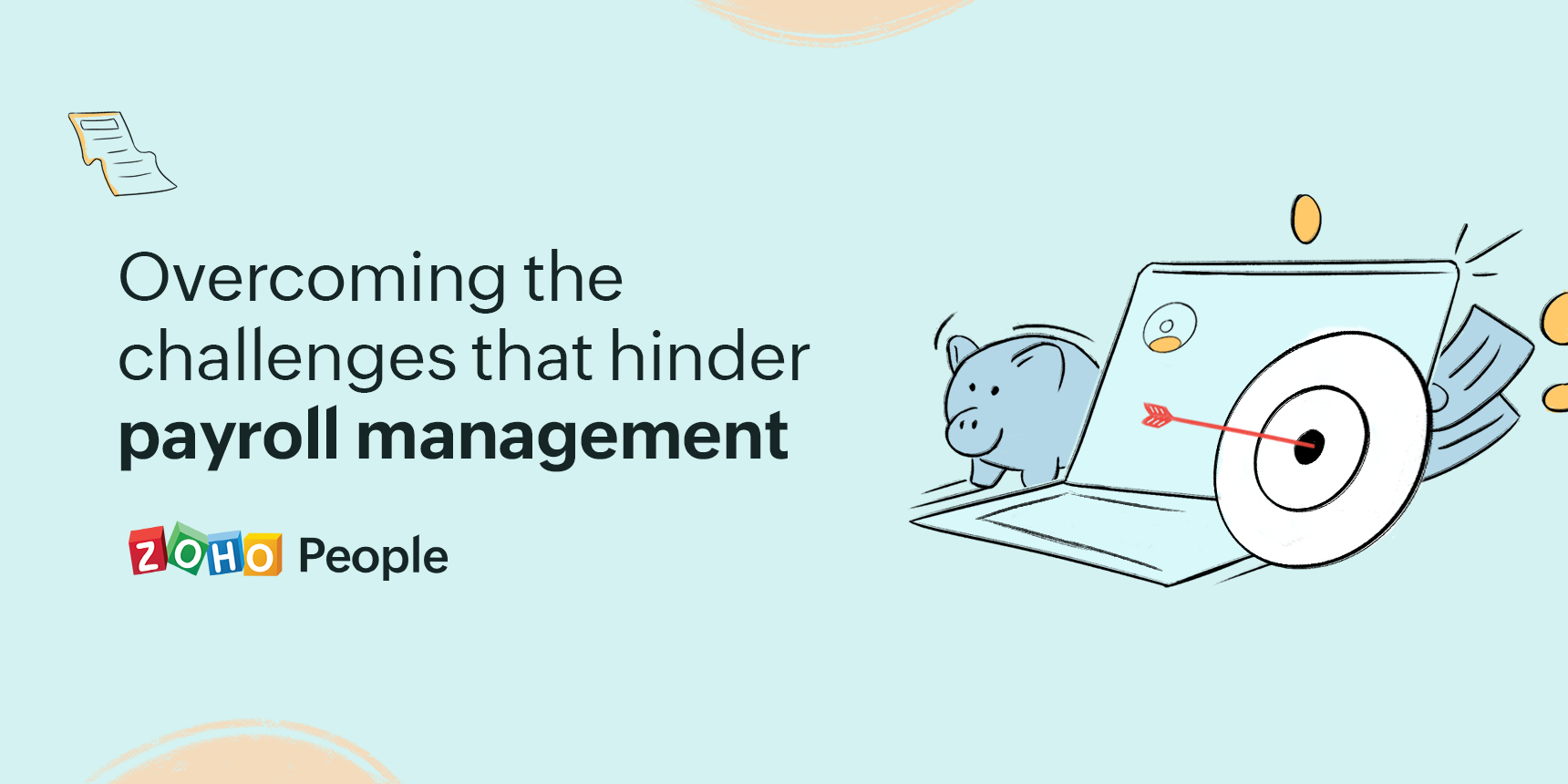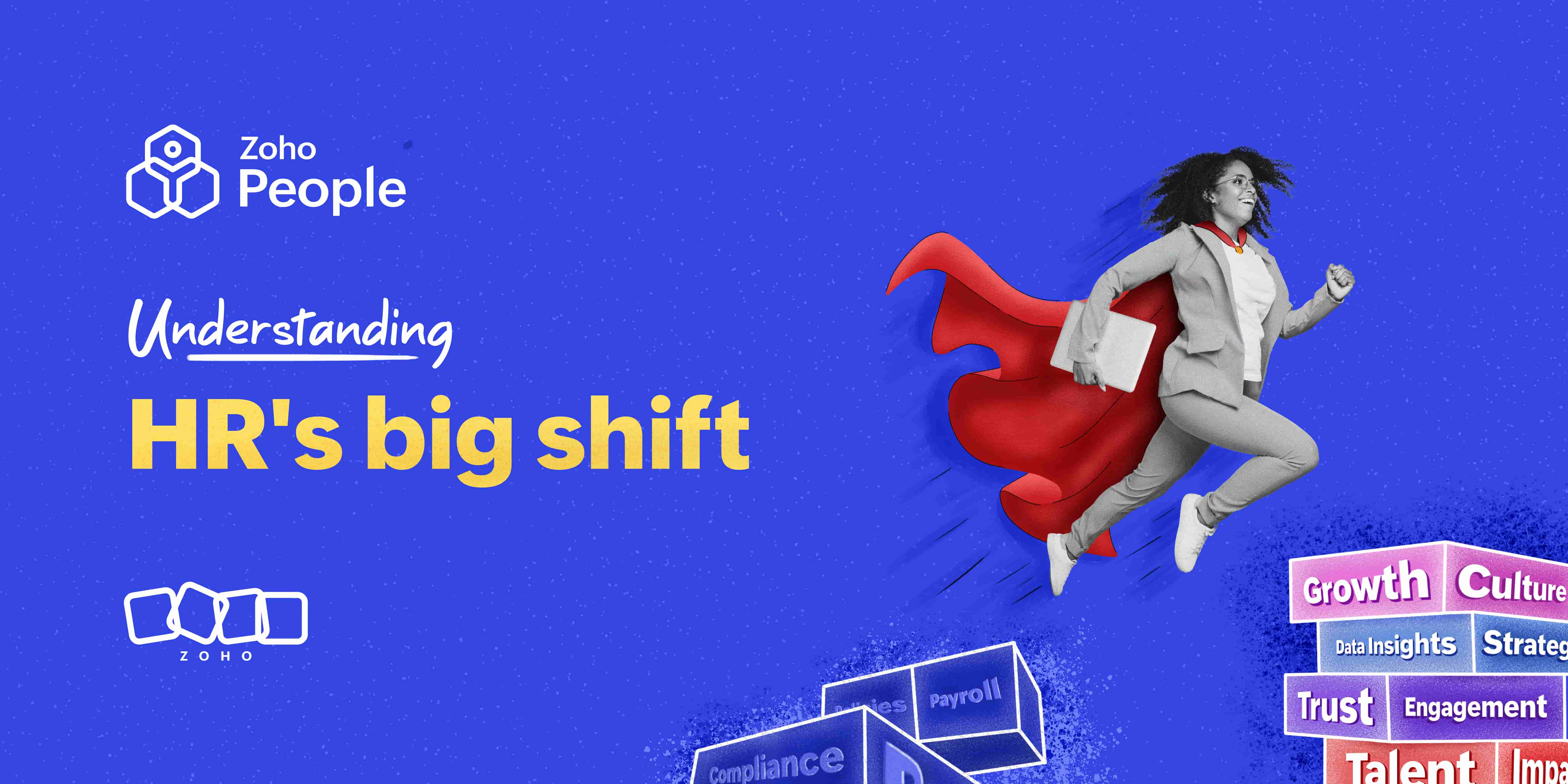- HOME
- More
- On Zoho People
- Decoding the challenges associated with payroll processing
Decoding the challenges associated with payroll processing
- Last Updated : August 23, 2023
- 1.7K Views
- 3 Min Read

Payroll processing is a key aspect of the company-employee relationship. Timely payroll processing greatly influences an employee's decision to stick with or leave a position, and it also reveals the financial integrity of the organization. Processing payroll accurately is crucial to ensuring compliance with payroll laws and maintaining employee morale. In order to help you make payroll processing simple, accurate, and compliant, we've listed four challenges that hinder effective payroll management and tips to overcome them.
Challenge #1: Errors in payroll calculation
When calculations are done manually, payroll professionals may make mistakes when calculating gross pay, allowances, overtime pay, reimbursements, tax, and other deductions. There may also be overlooked errors in timesheet data, attendance data, and leave data. These mistakes are more common when a company has more than five employees. Such errors in payroll calculation cost your organization money, along with its reputation, efforts, and employee trust.
Tips: Develop a properly-organized system to track your employee's time and attendance. Similarly, define how to calculate overtime wages based on the payroll laws governing your region. Tax rates tend to change, so be sure to keep close tabs on them. It's also recommended to adopt payroll software that automates all related operations, from calculating payroll to maintaining the records.
Challenge #2: Protecting payroll data
Payroll processing often includes sensitive data, including social security numbers and other protected employee information. By neglecting to properly store this data in secured platforms with strong encryption, you risk data breaches and your organization's reputation. For instance, hackers may use employee personal information for identity theft. This kind of breach requires companies to devote a large chunk of time toward investigating the case, assisting the affected employees, retrieving the compromised data, and navigating lawsuits.
Tips:A comprehensive payroll system protects sensitive data. You'll want to select a system that comes with user access controls to ensure only people at your organization with suitable permissions are able to access the information. It should also let you encrypt fields when necessary. As much as possible, avoid storing employee personal data using physical documents. Provide regular training for employees handling sensitive payroll data, and elaborates on the best practices to ensure data security and privacy.
Challenge #3: Dealing with multiple systems
Payroll processing itself can be painstaking, as it involves several calculations and a lot of data. Plus, coordinating with multiple teams and employees to get payroll input (such as new employee details, names of employees who have resigned, tax declarations, reimbursements, leave and attendance data, bonuses, and raises) can further slow down the process.
Tips: Today, most digital HR systems come with excellent payroll and expense management capabilities, which makes it very easy for HR, finance, and payroll teams to collaborate and share data seamlessly and securely. All data required to process payroll can be uploaded into a single system. For instance, if your payroll team requires daily working and overtime hours of employees, they can access timesheet reports in the software to get accurate data and push it to the payroll module for easy calculation.
Challenge #4: Staying compliant with payroll laws
Compliance is one of the major challenges that hinders seamless payroll calculation. Payroll and labor laws are consistently updated, and it can be difficult for organizations to keep up. This is especially true for companies that employ worldwide, as most payroll laws differ from region to region.
Tips: It's a good idea to create a detailed checklist of all the laws that govern your region and update it once every three to six months. You might also provide your payroll team with a subscription to payroll magazines that will help them stay on top of amendments and related news. Further, payroll software can make compliance management a breeze, as the system updates itself whenever there are changes to payroll laws so your organization always stays compliant.
Overcoming the challenges associated with payroll management
Payroll management is an important function that has to be managed well. When done effectively, you'll keep employee satisfaction high and comply with the law at all times. Adopting comprehensive payroll software that automates end-to-end payroll calculation is one of the best and easiest ways to overcome the challenges associated with payroll management.
Zoho People, our human resource management system, has been integrated with our payroll management software, Zoho Payroll, to make payroll stress-free. You can automate payroll calculations, ensure compliance, provide employees with access to a self-service portal, and manage payroll records—all from a single, centralized system. Learn more about this integration
Also Read:How is payroll calculated?
 Tarika
TarikaContent Specialist at Zoho People


